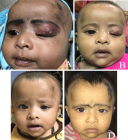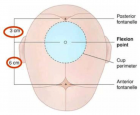Table of Contents
Impact of COVID-19 outbreak on urology practice in India
Published on: 18th June, 2021
OCLC Number/Unique Identifier: 9124848007
Background: The rapid spread of “Coronavirus Disease 2019’ (COVID-19) caused by Severe Acute Respiratory Syndrome Coronavirus-type 2 (SARS-CoV-2) significantly impacted health care facilities all across the globe. To assess impact on urology practice in our country, we developed a questionnaire based on relevant questions in current scenario for information regarding challenges and changes urologists were facing in their practices.
Material and methods: We conducted an online survey to find out the impact of COVID-19 on urology practice in Indian scenario. The questionnaire comprised of total 18 questions, which were relevant to day to day practice.
Results: Total 310 urologists across the India participated and consented to being part of the study. The majority admits change in their practice due to the recent COVID-19 outbreak. The majority admitted to attend fixed numbers of patients per day with prior appointment and to keep detailed records. The majority responded in positive that attendees will not be allowed, opted to wear N-95 mask in OPD, opted to take the relevant history, opted for thermal screening, opted for patients to wear a mask before entering OPD room, opted for using the new prescription at new visit and opted to avoid physical examination unless very necessary. The majority wanted to take consent from the patients that they may get infected by COVID-19 in the hospital and agreed on performing COVID-19 testing for every patient posted for surgery. The majority agreed to assign a separate operation theatre to operate patients with positive COVID-19 test and also preferred open surgery over minimal invasive surgery.
Conclusion: Our survey revealed that the recent pandemic led to significant impacts on urology practice in our country. The urologists working in different setups are facing different challenges in this difficult condition. They have made certain changes in their practice to safely provide effective care to their patients.
Bilateral transient osteoporosis of the hip with unilateral fracture in a 40 years old pregnant woman
Published on: 2nd April, 2021
OCLC Number/Unique Identifier: 8998601789
Purpose: Some physiological events in women’s life such as pregnancy and lactation can be associated to a condition known as Transient Osteoporosis of the Hip (TOH); if not promptly diagnosed it can lead to significant consequences such as femoral neck fracture. In this paper we describe a case of bilateral TOH, focusing on the importance of early treatment and how it influenced the outcome.
Methods: A 40 years old post-delivery woman came to our attention for hip pain and a left femoral neck fracture was diagnosed. Magnetic resonance (MRI) showed bilateral edema of the femoral head. She underwent total hip replacement on the left side; toe-touch weight bearing and pharmacological therapy were prescribed for the right hip.
Results: MRI at nine months showed complete regression of the femoral head and neck edema; the patient was clinically asymptomatic.
Conclusion: If not promptly diagnosed and treated, TOH can potentially evolve in fracture. Many therapeutic strategies have been suggested since now; we believe that avoiding weight bearing on the involved hip as early as possible is the key to recovery.
Cholecysto-colonic fistula after xanthogranulomatous cholecystitis: Surgeon’s nightmare
Published on: 9th February, 2021
OCLC Number/Unique Identifier: 8998604264
Xanthogranulomatous cholecystitis is a rare benign inflammatory disease of gallbladder that may be misdiagnosed as carcinoma of the gallbladder intraoperative or in pre-operative imaging. Intramural accumulation of lipid-laden macrophages and acute and chronic inflammatory cells is the hallmark of the disease. The xanthogranulomatous inflammation can be very severe and can spill over to the neighboring structures like liver, bowel and stomach resulting in dense adhesions, abscess formation, perforation, and fistulous communication with adjacent bowel [1-3]. Cholecysto-colic fistula is a rare and late complication of gallstones roughly found 1 in every 1,000 cholecystectomies.
Clinical featuresThe clinical features are variable and non-specific. Patients with cholecysto-colonic fistula often present with symptoms of acute cholecystitis and preoperative diagnostic tools often fail to show the fistula. Hence most cases it is an on table diagnosis.
ManagementTreatment involves closing the fistula and performing an open or laparoscopic cholecystectomy.
Soliter fibrous tumor of diaphragm in a patient with larynx cancer: Case report
Published on: 13th January, 2021
OCLC Number/Unique Identifier: 8899350266
Introduction: Solitary fibrous tumor is a neoplasm of mesenchymal origin with benign and malignant forms. We aimed to present a case of solitary fibrous tumor which developed in a patient operated for laryngeal cancer and originated from diaphragm in the light of the literature.
Case report: A 61-year-old male patient with tracheostomy with an undiagnosed lesion that appears to be almost 10 cm was referred to our clinic. Since it was a large volume mass, we chose to perform a thoracotomy over thorachoscopic approach.
Discussion: Although solitary fibrous tumors most commonly occur in the pleura but may also originated from diaphragm, and our case is valuable that originates from diaphragmatic since there are less than 5 reported cases in literature for past two decades.
Conclusion: Even in the case of recurrence, the main treatment remains as total surgical excision. Solitary fibrous tumors are usually detected because of compression symptoms. That is the main reason why we chose thoracotomy.

HSPI: We're glad you're here. Please click "create a new Query" if you are a new visitor to our website and need further information from us.
If you are already a member of our network and need to keep track of any developments regarding a question you have already submitted, click "take me to my Query."



















































































































































